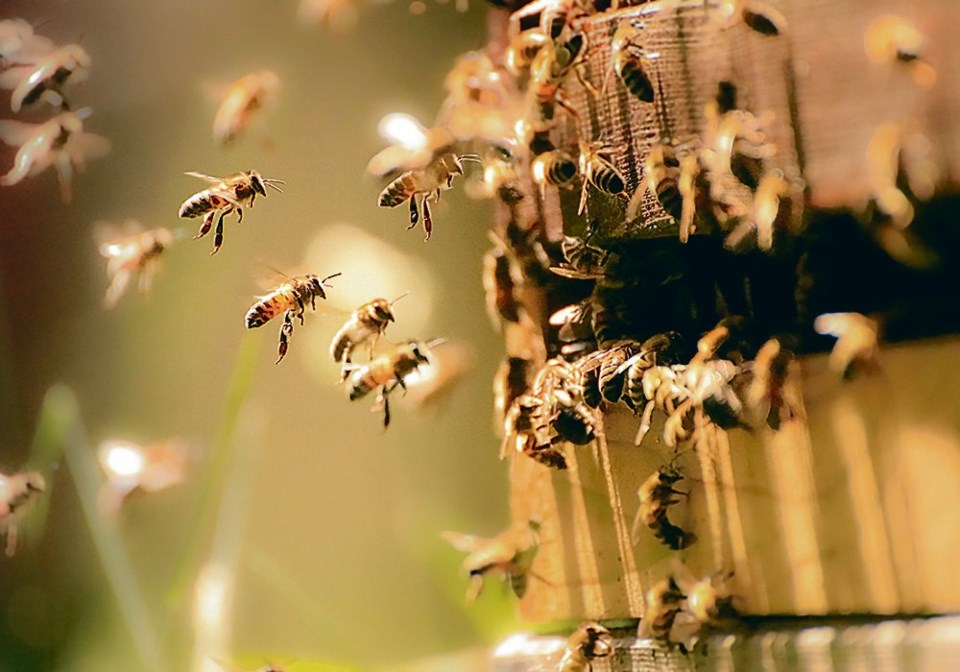WESTERN PRODUCER — Of all the threats to honeybees — drought, disease and cold weather in the spring — one issue stands above the rest: varroa mites.
The parasite affects bees in three ways:
- Feeds on the bodies of immature and mature bees, weakening their immune systems.
- Uses up reserves of nutrients needed for overwintering.
- Transmits viruses within the hi
For more than a decade, beekeepers in Canada and other countries have relied mostly on one product, Apivar, to keep varroa mites in check. But it appears that mites on some apiaries in Canada are becoming resistant to the chemical.
“Varroa mites are the worst enemy for the honeybee,” said Medhat Nasr, a honeybee expert and former provincial apiculturist in Alberta.
“In the last couple of years… (Apivar) no longer (has) that expected efficacy of 95 percent and higher…. In some operations it’s not (performing) as expected. This is a big sign (of resistance)…. It can spread like a forest fire from one location to another.”
If varroa mites become more resistant to the chemical, there isn’t a replacement product on the market, anywhere in the world, that’s as effective as Apivar.
If Apivar fails, fewer honeybee colonies would survive and beekeepers would struggle to maintain honey production in Canada.
“We would see (colony) losses go up, almost certainly,” said Nathan Wendell, president of the Saskatchewan Beekeepers Development Commission. “If all of a sudden we found ourselves without a synthetic miticide, winter losses would increase fairly significantly. And it would be that much harder to keep bees in Canada commercially viable.”
That ugly scenario is now less likely, thanks to the work or Nasr and other bee researchers in Western Canada.
When Nasr was employed at Alberta Agriculture, he started a project to identify potential replacements for Apivar.
The idea was to test miticides already commercialized and used to control mites in various crops to see if those products would be effective against varroa mites while also С����Ƶ safe for bees.
Nasr and his colleagues found two miticides that controlled mites. Four others look promising. They published a paper in the journal Nature.
“Collectively, it is recommended that (the two miticides) are candidates for a potential varroacide and recommended for further testing against varroa mites at the colony level,” the paper said.
But the research came to a halt in 2019, when the Alberta government cut funding to the agriculture department and scientists were unable to test the miticides in the field.
“I retired (and) the research part at Alberta Agriculture was shut down,” Nasr said from his home in Edmonton.
Then, one day, Nasr got a phone call from the Saskatchewan beekeepers commission, which wanted him to continue the work and collect the necessary data to get the promising miticides to market.
“Really, what we’re looking to do is add some tools to the toolbox,” said Wendell, who is part of Wendell Estate Honey in MacNutt, Sask.
“If we can add one, that’s great. If we can add three, that’s better, because it gives us options to rotate and mix treatments for (varroa).”
Canadian beekeepers have organic compounds that control mites, like oxalic acid and formic acid, but those products aren’t as effective as synthetic miticides.
Last year, Nasr applied the two miticides to a number of test hives in Saskatchewan. A key part of the field study is finding a dose that controls the varroa mites but doesn’t harm the bees. Miticides aren’t sprayed on bees. Rather, a plastic strip, one inch wide, is inserted into the hive.
“The bees walk (across) the strips, get the material into their body and it kills the mites,” Nasr explained.
If the field tests show that the miticides can be safely used in a commercial hive, the next step is expanding the label to include bees.
“These miticides are (already) С����Ƶ used for crops because crops also have a big problem with mites,” Nasr said.
The private companies that own and market the miticides would ask the Pest Management Regulatory Agency to add honeybees to the list of approved uses for the products in Canada.
If all goes according to plan, Canadian beekeepers could be using the new miticides by 2025 or 2026.
“Our goal, right now, is three years,” Nasr said.
The market for the miticides, though, could be much larger than Canada. Beekeepers in America and other countries also struggle with varroa mites, so the chemistries identified in Canada could eventually help honey producers around the world.




